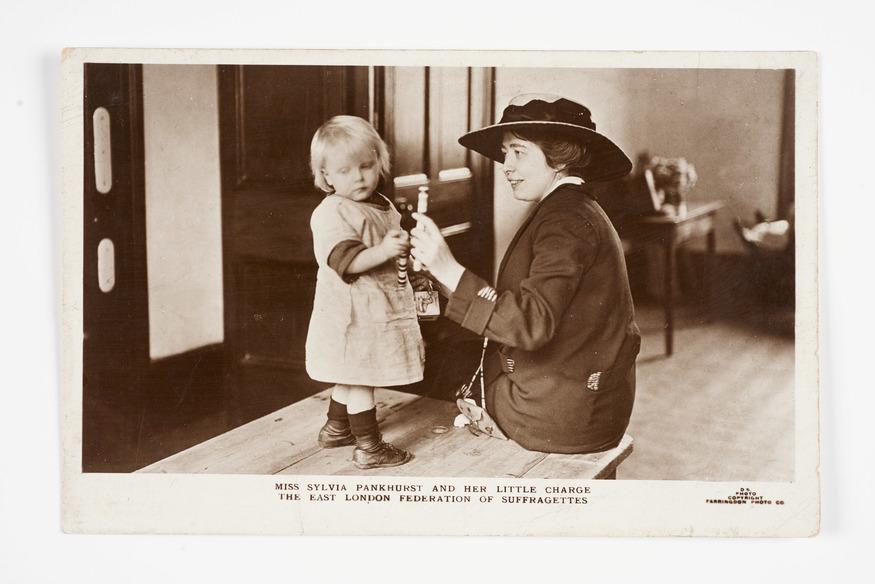An edited extract from Clare Cumberlidge's interview with Ruth Ewan, from the book Public House: A Cultural and Social History of the London Pub.

In 1915 the activist, artist and suffragette Sylvia Pankhurst took over no. 438 Old Ford Road, an ex-public house called the Gunmakers Arms.
The pub sat opposite Gunmakers Wharf, site of the London Small Arms Factory in Bow, an important arms producer during the first world war. As a pacifist, Pankhurst renamed the pub the Mothers Arms.

This was one of many buildings taken over by the East London Federation of Suffragettes around this time. About 40 children were cared for in the facility, run by Lucy Burgis and Minnie Lansbury. It was a clinic for mothers and babies, a creche allowing mothers to work, and provided information on hygiene and nutrition. Maud Hebbes, a nurse at the Mothers Arms, was later the first nurse at the birth control clinic of Marie Stopes.
The nursery followed the radical Montessori educational method, using child-sized furniture that allowed them to take part in self-directed learning and play. The main bar area became the reception from which medicines and fresh eggs were distributed. The parlour became a doctor's surgery and upstairs was the nursery. Later, they opened a soup kitchen to feed the local poor.

When we think about the history of pubs we might think of a typically male, working class culture surrounding them. But if we go back to pre-industrialisation when brewing was a decentralised process, it actually took place on a domestic scale and was carried out by women called 'alewives'. Gradually within communities people would go to alewives' houses to drink and then to buy ale. It was tradition that when the ale had brewed the alewife would place an 'ale stake' outside the house — transforming the home into a public space and, in turn, establishing the traditional pub sign hanging on a pole.
At the Mothers Arms, Pankhurst reclaimed the pub as a female space.

Though the Mothers Arms has since been demolished, Public House: A Cultural and Social History of the London Pub features many other pubs where you can still have a drink, including the Star and Garter in Bromley, with its protruding turret, voluptuous plasterwork and mock-Tudor half-timbering; the Queen Adelaide in Cambridge Heath, featuring a mirror-clad basement bar and extraordinary collection of ephemera, including an animatronic horse's head; and Fleet Street's storied Ye Olde Cheshire Cheese, with its dark-panelled rooms, creaky staircases and open fires.

Public House: A Cultural and Social History of the London Pub, edited by David Knight and Cristina Monteiro, RRP £18.99



